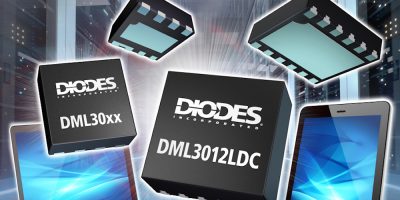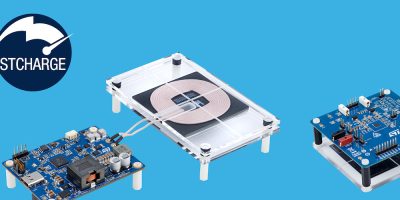Diodes has announced the expansion of its DML30xx series smart load switches. The four new products, DML3008LFDS, DML3010ALFDS, DML3011ALFDS, and DML3012LDC, provide high-current (10.5A to 15A) power domain switching control for voltage rails from 0.5V to 20V. Through the array of embedded functions, these devices are highly effective at handling all aspects of power delivery to microcontrollers, graphic cards, ASICs, FPGAs, and memory chips. They are well-suited for power management purposes in servers, computing hardware, networking infrastructure, gateways, solid-state drives, notebooks, tablets, industrial equipment, hot-swappable devices, and peripheral ports.
Incorporating a chip-on-chip arrangement that sees the controller chip in each device stacked on top of a low RDS(ON) N-channel power MOSFET, these devices occupy an ultra-compact footprint to provide increased power density. Their large, underside heat pads maximize thermal efficiency to reduce operating temperature and improve reliability. Power consumption is minimised due to their <150A(typ.) on-state current and 0.1A(typ.) standby mode.
The high degree of feature integration that these load switches offer minimises additional circuitry requirements—achieving reduced component count, smaller PCB area, and accelerated time to market. To maintain system reliability and maximize uptime, a comprehensive choice of safeguards and monitoring features are available. These allow designers to select the optimum combination to suit their applications. These include short-circuit and overcurrent protection, undervoltage lockout, power good signal, and soft-start to limit inrush current to an acceptable level. Additionally, all devices provide quick discharge capabilities to ensure controlled rail power-down, and thermal shutdown protection.







